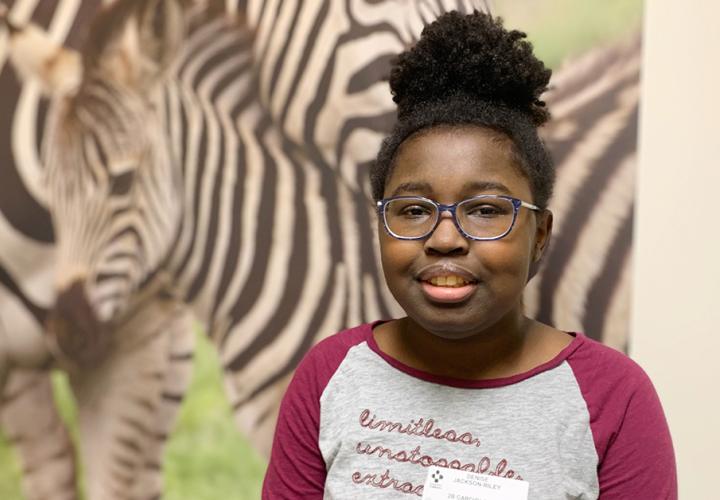“A pulmonary hypertension program requires a lot of coordination and collaboration with multiple specialties,” says Dr. Kuruvilla. “You have to look at the body in its entirety, and consider other systemic causes that may initially sound unrelated to the heart and lungs. That open exchange of ideas among other disciplines elevates care across the entire health system.”
While Lauren was in the hospital, doctors from all the specialties would gather every morning to discuss Lauren’s health, and Lauren and her family were always included. Lauren’s mother, Denise, marveled at it. “Sometimes you need to have a whole group together from other specialties to make things work,” she says. “A lot of times that doesn’t happen, even for adults. But that’s what happened.”
Lauren is a thoughtful teenager, who weighs what she says very carefully. It meant a lot to her that Dr. Kuruvilla took a thoughtful approach too. When he explained the seriousness of pulmonary hypertension, and how it would impact her life, he sat in a chair beside her hospital bed so he could speak to her directly.
“The information that he gave me was easy to understand, and right to the point,” Lauren says. “He’s really helped me understand what’s going on.”
“From the start, Dr. Kuruvilla knew what to do and we trusted in him,” says Denise. “It was hard to hear about the gravity of Lauren’s situation, but we appreciated hearing the real deal. He helped us understand that our life was going to change. He said we were going to have a new normal.”
> Related: When newborn Delilah needed surgery for a rare heart defect, Connecticut Children’s was there
“A diagnosis doesn’t set in until you hear what it means.”
Dr. Kuruvilla explained that there is no cure for pulmonary hypertension, and living with it requires a partnership with open communication, trust and aggressive medical treatment. This means that, unless another treatment is developed, Lauren will have a continuous delivery of medication, either by IV or a catheter placed under the skin, for the rest of her life.
“A diagnosis doesn’t really set in until you hear what it means,” says Lauren. “And mine really hit me when he said ‘for the rest of your life.’ It made me imagine what I’d look like with this catheter in my arm in 10 years, in 20 years, in 30 years. It wasn’t a pretty thought. But I keep thinking: It’s not as bad as it could be.”
Meanwhile, research is changing what doctors know about the disease every day. Dr. Kuruvilla has used these findings to keep Lauren’s life as normal as possible. For example, her medication is delivered into her arm using a small pump about the size of an iPhone. She and her family can care for the subcutaneous line at home, and it’s small enough that Lauren can slip it into her jeans pocket. If you didn’t know to look for it, you would never know it was there.
Lauren was in the hospital for a month before she was healthy enough to go home. The first thing she did was close the door to her room and flop on her bed. She’d been imagining exactly that moment for weeks. It meant she was finally healthy enough to return to her life.
> Related: With Video Visits, you can connect with our pediatric experts right from home
“Connecticut Children’s was here at the right time.”
After several months of treatment, Lauren is doing great. She can now walk nearly 10 times as far as when she was first diagnosed. She can enjoy her favorite foods again. Thanks to the convenient way her medicine is delivered, she can move around like usual, and easily curl up with a good book – one of her passions. In many ways, life is the same as it was before she got sick.
In other ways, it is – as Dr. Kuruvilla promised – a “new normal.” She has frequent doctor’s appointments, and at home, she and her mom must be diligent about making sure her medication line and pump are operating the way they’re supposed to. If there are any issues, she needs to see a doctor immediately.
For families in other parts of the country, whose nearest pulmonary hypertension specialist is several hours away, it can be a stressful situation. For Lauren and Denise, it’s a comfort to know that Dr. Kuruvilla and Connecticut Children’s are just a few miles up the road.
“Had Dr. Kuruvilla not been here, we would’ve had to go to Boston or Manhattan,” says Denise. “The treatment has been outstanding. Connecticut Children’s was here at the right time for us. This is what we needed.”
Learn more about Connecticut Children’s cardiology services >>
Related
